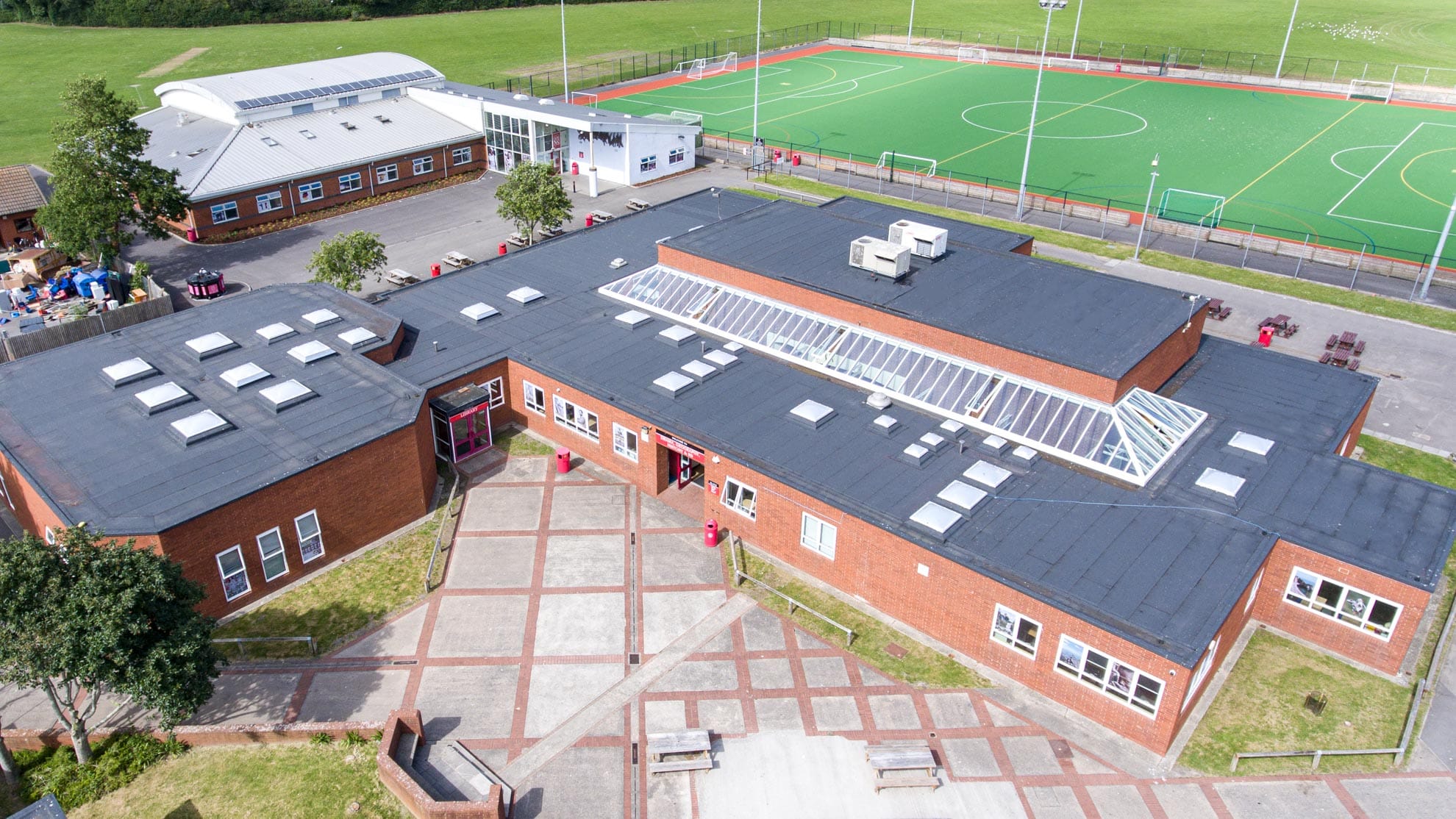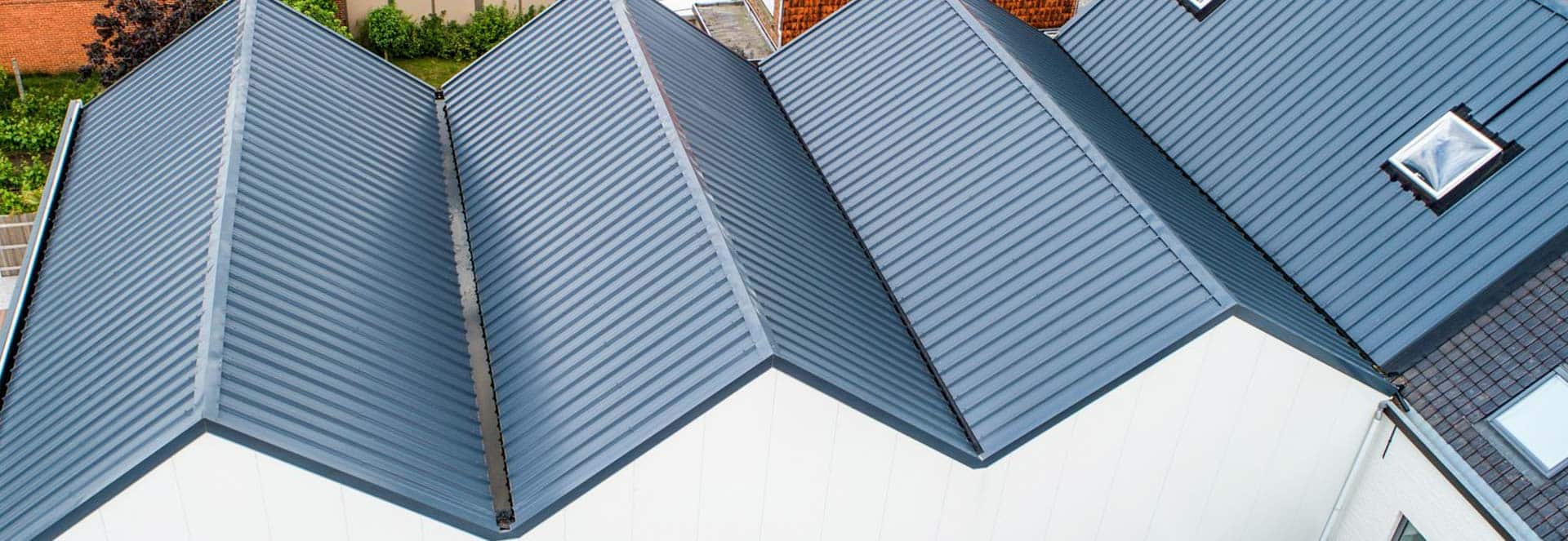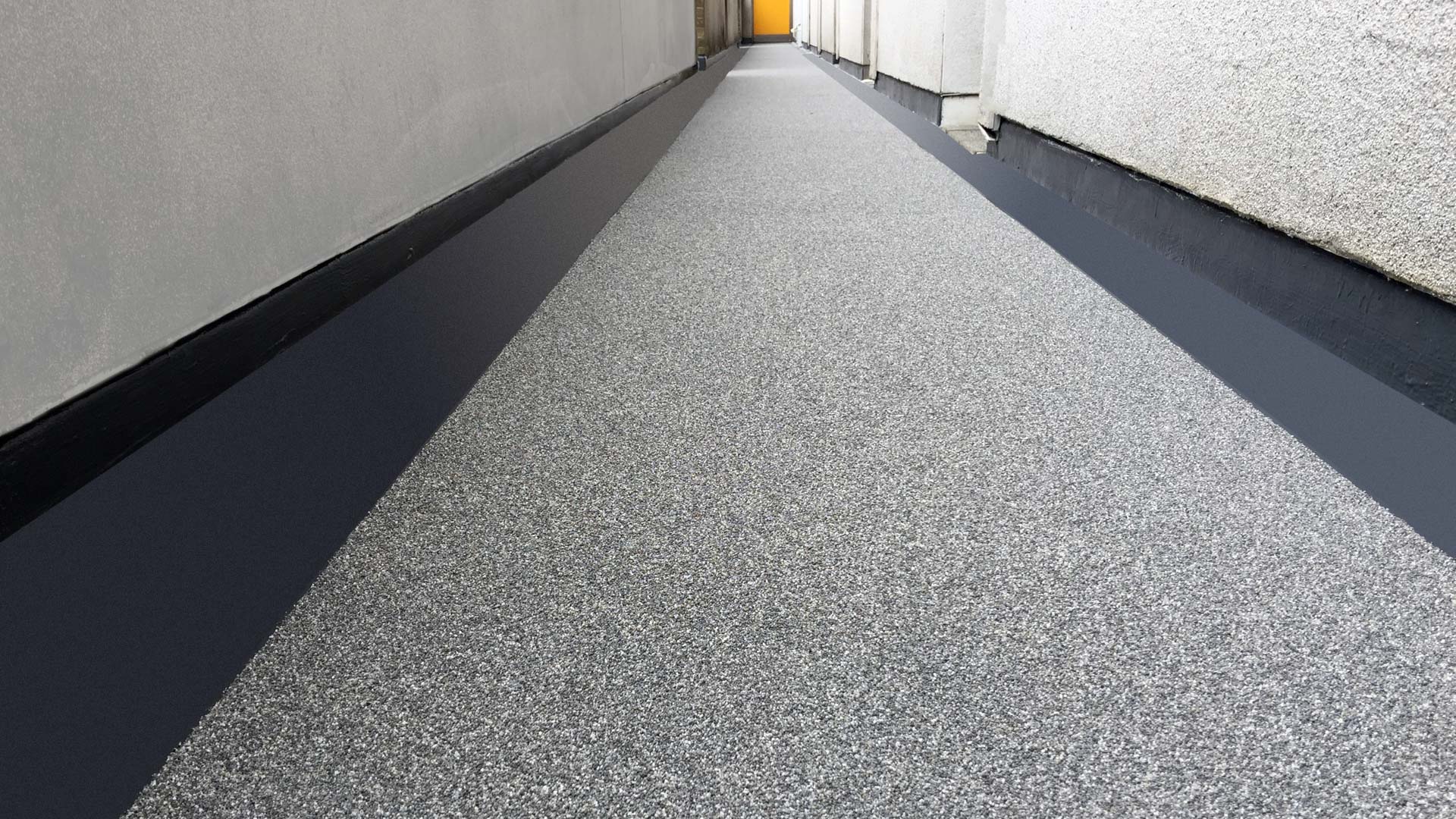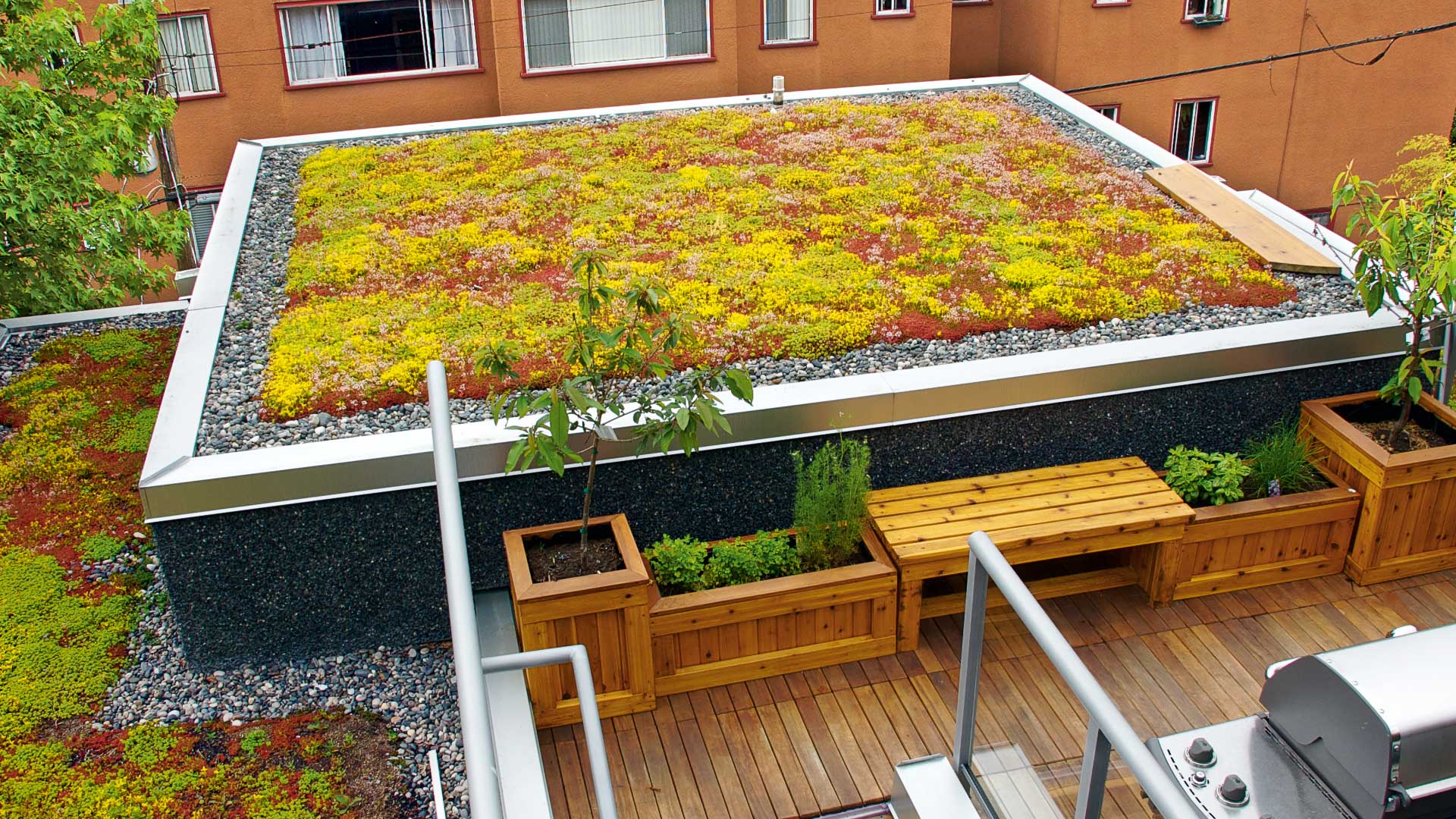

Your roof is one of the most important parts of your building, and a properly installed and maintained roof will provide reliable service, protecting your estate and all its occupants for many years.
As you plan your next project, it’s important to ensure that all decisions to upgrade are based on the current condition and performance of the roof through a roof survey to ensure you remove the unknowns from your budgeting process.
Whether you are looking to refurbish an existing roof or undertake a new-build project, there are a variety of roofing systems to consider to ensure you specify the right system for the right application. We’ll take a closer look at some of the best waterproofing systems to consider for commercial roofs.

Modified Bitumen Roofing Membranes
With an extremely long lifespan of up to 50 years, modified bituminous flat roofing membranes are durable enough to withstand whatever weather conditions come their way and flexible enough to contour easily to the shape of the building without cracking.
Waterproofing membranes are available in two kinds of application methods: bitumen roofing membranes are either torch-on or self-adhesive (flame-free), both options can be designed into tapered roof insulation schemes that will mitigate ponding water and improve the overall thermal efficiency of the building.
A trusted material for high-performance waterproofing, here are some of the advantages and disadvantages of modified bitumen roofing membranes:
Advantages
- Multi-layered protection
- Torch-on and Self-adhesive options
- Easy to work/repair
- Flexible and durable
- Extremely long lifespan
- Time proven performance
Disadvantages
- Skilled installers must have specific training with Safe2Torch
- Not all modified bitumen membranes are equal in performance

Standing Seam Metal
Offering quick installation and aesthetically striking results, standing seam metal roofs are popular for new-build, refurbishment and asbestos encapsulation projects. Metal roofs are incredibly low maintenance, making them ideal for businesses, and are 100% recyclable at the end of their life.
Standing seam metal roofing can last up to 50 years, making it one of the most durable and long-lasting options on the market. A popular choice for specifiers across the UK, here are some of the advantages and disadvantages of a standing seam metal system:
Advantages
- Quick installation
- Aesthetically pleasing
- Design freedom
- Mechanically attached without penetrations
- Long-lasting waterproofing
- Curved and tapered panels
- No traverse joints
- Suitable for very low slope roofing
- Exotic metal options, i.e. Copper, Zinc, Aluminium
Disadvantages
- Generally more expensive
- Added complexity

Cold-applied Liquid Coatings
Flame-free roofing systems have become an increasingly important solution to the education and healthcare sector’s flat and low-pitched roofing requirements, significantly mitigating the danger of roof fires.
Liquid-applied roofing systems can be tailored to strengthen and waterproof a failing roof as part of a refurbishment project or be used in new-build projects looking for a smooth and modern aesthetic finish. It is also possible to specify cold applied liquid coatings with a zero Volatile Organic Content (VOC) formula, which prevents typical disruptions to the day-to-day operations of sites where odours can be hazardous or a nuisance, such as healthcare, education, food manufacturing or laboratory settings.
Here are some of the key advantages and disadvantages of cold-applied liquid systems:
Advantages
- Easily applied
- Suitable for a variety of substrates
- Chemically resistant
- Excellent tensile strength
- UV resistant
- Great for waterproofing complex roofs
- Monolithic membrane without joints/laps
Disadvantages
- It cannot be installed if the weather is too hot or cold
- It cannot be applied over silicone-based coatings
- Will fail dramatically if substrate preparation is incorrect
- It does not have multi-layered protection

Sustainable Roofing
Green roofs can be combined with bituminous roofing membranes, liquid applied and standing seam metal systems to provide long-lasting waterproofing and multiple benefits to an estate’s environmental initiatives. By improving the thermal efficiency of a building, a green roof can also contribute to your site’s net-zero carbon operational targets.
Many businesses are now incorporating solar PV panels, such as Garland’s Solarise system, into their roofing design to significantly reduce the operational carbon output and save money on the overall running costs.
Here we take a look at the advantages and disadvantages of extensive green roofs:
Advantages
- Requires minimal maintenance
- Hardy species of plant-life
- No irrigation required
- Modest structural load
- Wind resistant
- Used on sloped/pitched roofs
- Improves air quality
- Reduce run-off
- Desirable aesthetics
Disadvantages
- Only supports drought tolerant plants

Roofing expertise at your fingertips
From weekly site visits and detailed system queries to specification writing and maintenance advice, we are on hand to help you make your project decisions as easy as possible.
With a breadth of waterproofing solutions to consider on the market today, Garland UK can support your next roofing project with expert advice from a local Technical Manager, to make sure that the right system is used for the right specification.
